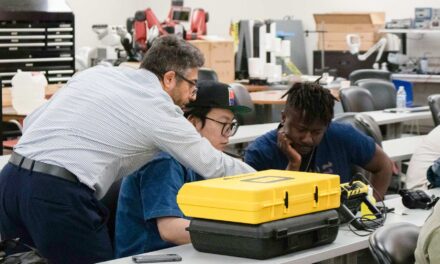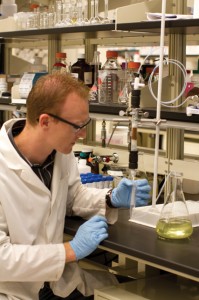
Scientific advances promise better ways to engineer water-safety systems

Posted: February 13, 2012
Some of most recent advances in technology, chemistry, physics and materials science will be applied to new methods for ensuring water safety being developed by Arizona State University engineers.
In a project supported by a $500,000 grant from the Environmental Protection Agency (EPA), Paul Westerhoff will lead exploration of ways to improve the effectiveness of water treatment systems in the nation’s small communities. He will also head a project supported by the National Science Foundation (NSF) to optimize the use of new technology for reducing a prevalent contaminant in groundwater.
Westerhoff is the associate dean for research in ASU’s Ira A. Fulton Schools of Engineering, and a professor in the university’s School of Sustainable Engineering and the Built Environment.
His research partner for both projects is Kiril Hristovski, an assistant professor in ASU’s College of Technology and Innovation. For the EPA project, they will be joined by Aaron Dotson, an assistant engineering professor at the University of Alaska Anchorage, who earned his doctoral degree in engineering at ASU.
For the NSF project – supported by a grant of more than $295,000 – the research team will seek advances in the use of photocatalysts to reduce the amount of nitrates in water supplies. High concentrations of nitrates in water can pose significant risks – including causing life-threatening diseases – and lead to excessive growth of algae or plankton in aquatic ecosystems.
Westerhoff and Hristovski will experiment with different types of photocatalysts to reduce nitrates. Photocatalysis involves the acceleration of chemical reactions using the power of light. In this case, the researchers are seeking to produce reactions at the nanometer scale that will convert nitrate to a nonthreatening form.
“This will bring some of the most recent and significant advances in light-based technology and materials nanotechnology into engineering better water treatment systems,” Westerhoff says.
The researchers plan to eventually develop an open-access website to provide the public the latest information on nitrate occurrence, health risks and proven strategies for water treatment. Knowledge gained from the research will be used in graduate-level education in environmental engineering and to provide research themes for senior-year capstone projects by engineering undergraduates.
The EPA project will focus on ways to improve monitoring, testing and treatment of water systems in communities with populations of roughly 50 to 500 residents.
Such communities rarely have the resources to maintain timely, effective and thorough methods of ensuring their water meets basic safety standards, Westerhoff says.
Aiding those communities in water treatment efforts isn’t simply a matter of scaling down larger systems used in urban areas, he says, since rural and remote areas often face different environmental and contaminant issues.
Water systems in small communities typically must deal with multiple pollutants in groundwater, making treatment and compliance with health regulations complicated, Westerhoff explains.
The team plans to develop types of hybrid sorbents (materials designed to absorb liquids and gases) capable of simultaneously removing multiple contaminants. In addition, the researchers will develop monitoring and sensing networks to enable simplified automated operation and testing of water systems designed to optimize the groundwater sorbent treatment systems.
Local officials in the Tohono O’odham Native American Indian community in Arizona and in a remote area of Alaska are being asked to participate in the research by conducting on-site demonstration projects.
Systems that can work in those locations could be applied with success in the vast majority of small communities throughout the country, Westerhoff says.



































